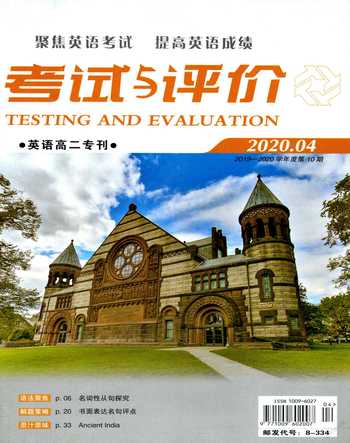NASA and Space Exploration
王晓玥
Mankind has always had an amazing thirst for knowledge. The desire to wonder about and possibly see what is up in the heavens has been in the minds of men for a long time. In October, 1958, the National Aeronautics and Space Administration was created by the United States Government. It was described as “an Act to provide for research into the problems of flight within and outside the Earths atmosphere, and for other purposes.”
The formation of NASA was the direct result of the fact that the Soviets had launched Sputnik 1 in October, 1957. This was the worlds first artificial satellite. Americans were astounded (震惊的) and believed that the United States was way behind in space technology. Therefore, the United States launched its first Earth satellite in January, 1958.
NASAs first attempt to place humans in space was Project Mercury. This was a trial to see if men could endure a flight into space. On May 5, 1961, Alan Shepard, Jr., became the first man in space. On February 20, 1962, John Glenn orbited the Earth in a space capsule (太空舱). Project Mercury sent up 4 more flights. They could send up and safely bring humans back from space.
Project Gemini allowed two men to ride together in a space capsule. In this project, NASA learned about weightlessness in space and worked on reentry into the Earths atmosphere. In June, 1965, Edward White became the first man to conduct a space walk outside of the space craft.
NASAs greatest achievement after that was Project Apollo, designed for space exploration of the moon. In July, 1969, Apollo 11 carried Neil Armstrong and Buzz Aldrin to the moon. They landed and returned safely. Neil Armstrong walked on the moon first.
In 1975, Russia and the United States each sent up a spacecraft. These docked together in space. They conducted experiments on the spacecraft for two days. In 1981, the first space shuttle was launched. It was different in that it looked like an airplane and landed like one upon reentry.
In January, 1986, the orbiter Challenger with seven crew members aboard blew up 73 seconds after takeoff due to a fuel leak. In September, 1988, the Challenger returned after modifications (改進) and flew 87 successful missions. In February, 2003, just 15 minutes before landing in Texas, the Columbia orbiter blew up, again killing 7 crew members.
In 2003, the Galileo mission completed a 14-year study of Jupiter by crashing it onto the planet. In 2005, NASA launched the space shuttle Discovery, the first manned craft since the Columbia disaster.
In recent years, a probe has landed on Mars, and the spacecraft Kepler has been sent to look for planets outside our solar system.
In 1998, an international space station was set up. It was a joint effort of Russia, The United States, Canada and others. Astronauts spend a year or more up on the space station, conducting experiments and making repairs. In March, 2017, the crew harvested plants grown on petri dishes (培养皿). They will send them back to Earth on the Dragon capsule. The lead scientist on the Space Station writes a weekly update on activities and posts it on the Internet.
NASA plans to send an unmanned Orion around the moon by the end of 2018. Later, NASA plans to use the Orion crew vehicle to send men on an exploration into deep space in the 2020s.

